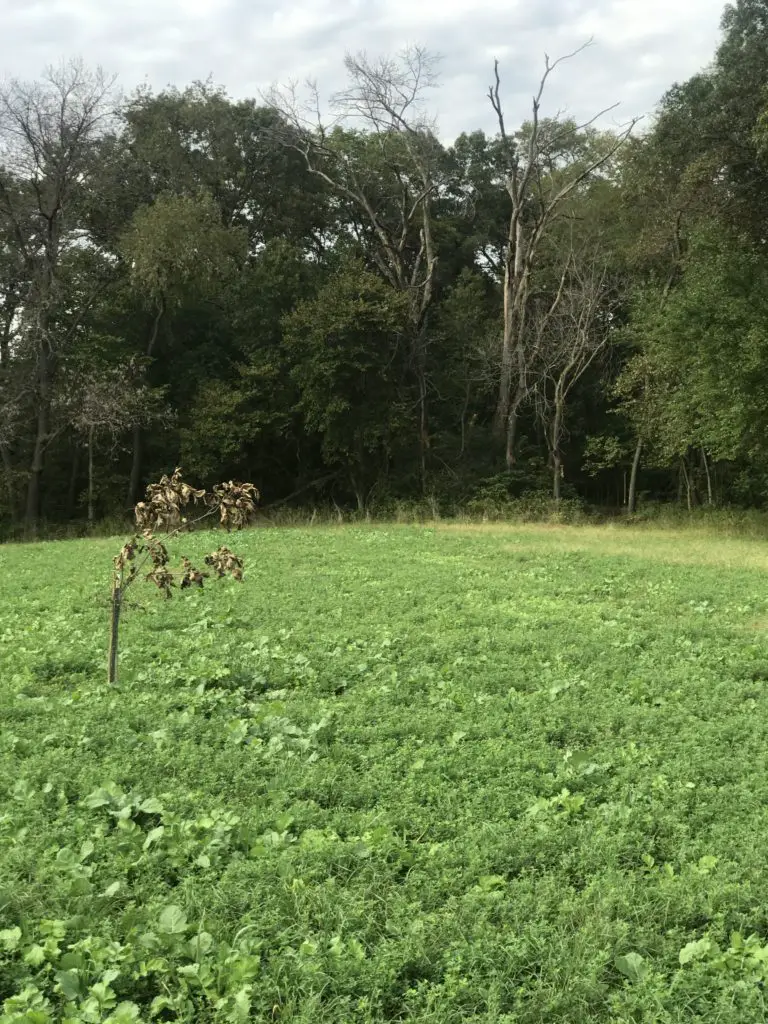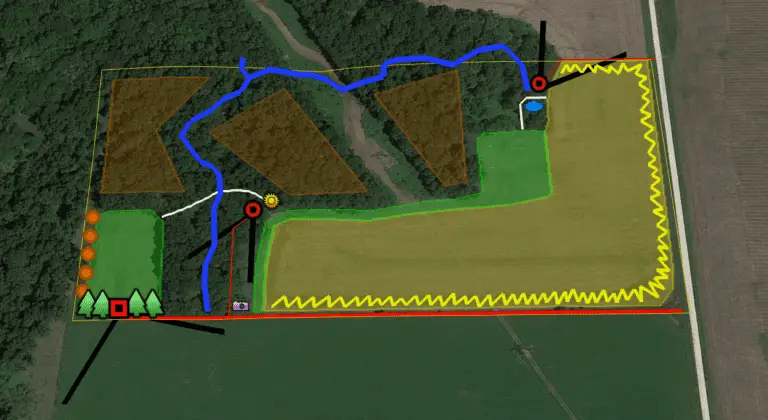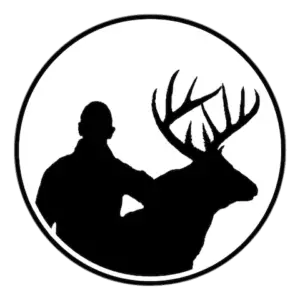The females in the deer herd live on much less land than bucks. Several radio collar studies have shown that a buck’s home range is about 1 square mile (1 section of land), and a does is about half that. This equates to 640 acres of land. The deer heard doesn’t recognize property lines. If you want to manage several bucks and does and make sure they never leave your land, you would need to own around 1,000 acres.
How many acres do you need to hold deer?
Let’s be honest, most people will never afford to buy 1,000 acres of whitetail habitat. However, that doesn’t mean that you can’t hold deer and make influential management decisions. You can manage your ground so that it becomes a bucks core area. A bucks core area is the place where he spends most of him time within his overall home range.
Every buck has his own unique home range and core area within that home range. For example, a buck might have a home range of 600 acres and a core area within that home range of 100 acres or less. This is very encouraging for the average Joe that wants to manage deer for hunting big bucks. Even if you can only manage 10 acres, your ground could be the portion of a bucks core area that he likes spending most of his time.
I would rather own several small pieces of land rather than one large chunk. I know the odds of killing a mature buck, or multiple mature bucks, increases if you have several deer herds to hunt.
Where do bucks like spending most of their time?
Bucks like to hang out in cover for the most part. Ok, that’s a little vague. We all know they aren’t typically standing in wide-open fields to be easily seen by us. Maybe we should ask this question a different way. A more interesting question is where do bucks spend most of their time during daylight hours?
Unless the rut is on, bucks don’t move very far in the daylight. On a typical day during daylight hours, bucks are going to stay in their bed. Sure, they might get up, roam around, and browse on some vegetation. But they don’t typically stray very far away from their bed.
Finding a buck’s bed is not as easy as some people make it sound. Lucky for us, we are talking about managing the deer herd. We don’t need to find a buck’s bed because we are going to make them ourselves. If you do want to learn more about tracking down a bucks bedding area, check out my article about how to tell if a big buck is in your area.
How to create buck bedding
The most important thing to understand about buck bedding is that a buck chooses his bed(s) based on security first and food second. A buck wants to feel secluded from people and other deer in the herd (social pressure). He will find the best bed(s) he can find within a few miles of the most attractive food source.
Creating buck bedding can get very strategic and there is a lot of opinion in the hunting industry about how to do it. Some experts recommend creating specific beds where the deer is literally going to lay down on a specific spot on the ground. Other experts say to just focus on making deer hotels instead of bedrooms. This is maybe a one to five acre area that is left alone for deer only, with no human intrusion. I like a blended approach if you have the habitat for it.
Create your buck hotel by reducing the line of sight. If it’s already thick and nasty in your buck bedding area, that’s great. If not then you need to cut some trees. This will help get some more cover on the ground and open up the tree canopy to allow sunlight to reach the ground. When the growing season comes around you should see an explosion of vegetation. This is going to offer the security and food that bucks want.
Seeing from one side of your bedding area to the other is bad. I don’t like to be able to see more than 50 yards at the most. Before cutting tree’s, it’s a good idea to consult a forester. You don’t want to make a huge mistake that could cost you a lot of money in timber value. If you have existing timber value the forester can get you in touch with a reputable logger to cut your timber for you.
Once you have your bedding area created, the only way it’s going to produce the results you are looking for is by staying away from it until you’re going to hunt. After creating your buck hotel, take every precaution to keep the deer from seeing, hearing, or smelling you or anyone else. Even when you hunt this bedding area, you still need to keep your sight, scent, and sounds a secret from the deer. This is the kind of buck bedding area that creates better hunting opportunities.

Keep deer using your property
Deer are slaves to their own stomach. Even though your odds of seeing a buck in the daylight is much better in secure cover, that doesn’t mean food plots shouldn’t be a part of your management plan. If the land you hunt allows for it, you should install food plots because they are what deer are most attracted to, and bucks like bedding near attractive food sources.
If your goal is to hold mature bucks and keep them using your property routinely, then your food plot strategy should be well thought out. There are soo many decisions to consider.
Location, location, location
Where can you put a food plot without educating the deer? Depending on the size of your property and how it is laid out, it may be more beneficial for you to plant a food plot that you never plan to hunt over. Many times, this is the most effective way to increase your hunting opportunities. It’s really hard to not hunt over a food plot that you spend a lot of time and effort getting installed, but if you can be disciplined and stay away it will pay huge dividends.
A food plot is your tool to attract deer to keep them in the area. If you hunt your food plot and spook deer off of it then you are doing more harm than good. You would be better off not planting a food plot at all. Deer will find bedding areas further away from your food plot than they naturally would otherwise. This is a good way to get a lot of nighttime activity, especially from bucks.

Map it out
Before I create any food plots, I design my strategy first by mapping it out. I take into account habitat changes that already exist, like a wood edge meeting an ag field. I look at my access into the property. Will deer hear me park my truck? Will they be able to see me as I walk to my stand? Can I still hunt my property and keep the wind from blowing in the direction of the food plot? What topographical changes exist?
Food plots that are planted at higher elevations are ideal for non-swirling winds and hidden access into the stand or blind? If you plan to hunt over the plot, then higher elevations are more favorable. Planting is typically more successful due to exposure to sunlight, better odds of seed not washing away, and the ability to get equipment to the location.
If you plant in a valley or bottom then your wind is going to swirl. I strongly suggest hunting in an enclosed blind to seal your scent inside if you decide to plant and hunt in a bottom. You also have to worry about flooding and your seed getting washed away. And lastly, getting equipment in valleys is not always feasible. On a positive note, food plots planted in bottoms and valley’s are ideal for working toward your goals of keeping deer in your area as long as you don’t hunt near it.
Plant the right seed
If your goal is to manage deer then focus your efforts on planting late season food plots. I did a deep dive into this topic in my article called “Best fall and winter food plots for deer”. To sum it up, deer like eating a variety of foods just like people do. As much as I love pizza, I don’t want to eat it for every meal. Deer like options too
Try to figure out what your neighbors are planting and offer the deer something different. The odds would say that most of your neighbors aren’t planting anything at all, or very little. If your neighbor has nothing but brassicas, try planting wheat, oats, rye, soybeans, or corn.
In the spring, plant fruit trees that drop there fruit in November & December. Focus on planting seed varieties that will help deer sustain themselves through tough winter months.
Conclusion
It takes roughly a thousand acres to manage deer that include mature bucks. This number is only important if you don’t want mature bucks leaving your property. In reality, most hunters will never come close to owning this much land. However, small property owners can make a huge impact at managing deer and helping deer live longer to reach maturity.
Even though a bucks home range is about a square mile worth of land, his core area can be anywhere from 10-200 acres within that home range. Give mature bucks the security he is looking for and a food source that he can bed near then you are on the right path to making the majority of harvest and management decisions in your immediate neighborhood.

